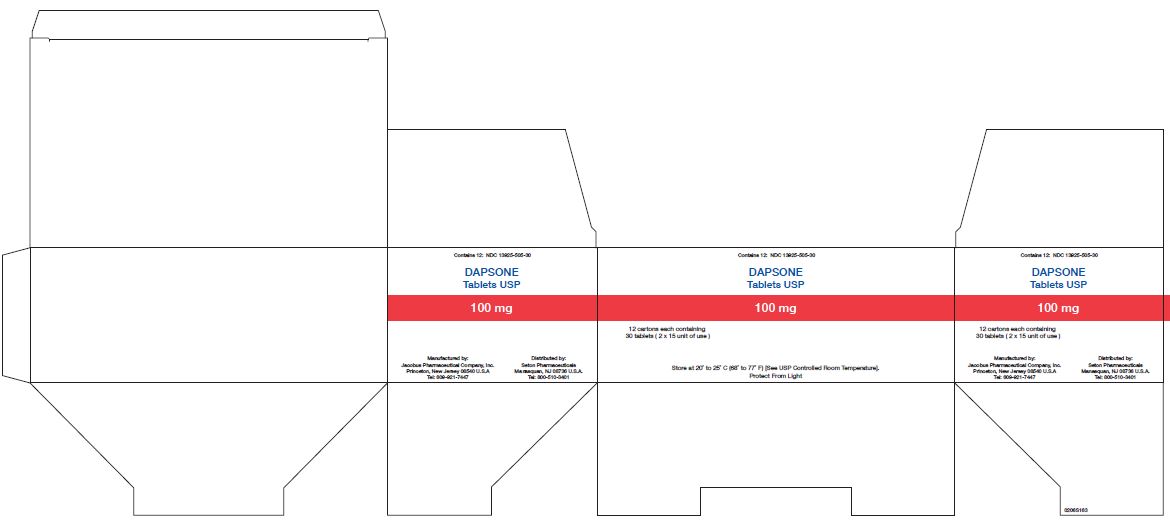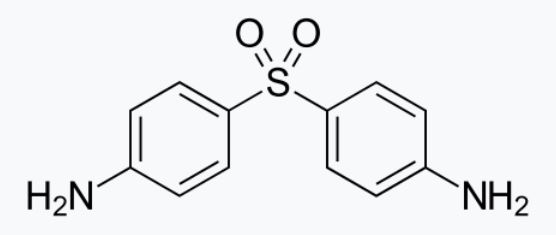Drug Catalog - Product Detail
DAPSONE TB 100MG 100
| NDC | Mfr | Size | Str | Form |
|---|---|---|---|---|
| 13925-0505-01 | SETON PHARMACEUTICALS | 100 | 100MG | TABLET |
PACKAGE FILES





Dapsone-USP, 4,4'-diaminodiphenylsulfone (DDS), is a primary treatment for Dermatitis herpetiformis. It is an antibacterial drug for susceptible cases of leprosy. It is a white, odorless crystalline powder, practically in-soluble in water and insoluble in fixed and vegetable oils.
Dapsone is issued on prescription in tablets of 25 and 100 mg for oral use.

Inactive Ingredients: Colloidal silicone dioxide, magnesium stearate, microcrystalline cellulose and corn starch.
<p class="First">Dapsone-USP, 4,4'-diaminodiphenylsulfone (DDS), is a primary treatment for Dermatitis herpetiformis. It is an antibacterial drug for susceptible cases of leprosy. It is a white, odorless crystalline powder, practically in-soluble in water and insoluble in fixed and vegetable oils.</p><p>Dapsone is issued on prescription in tablets of 25 and 100 mg for oral use.</p><div class="Figure"><img id="mm01" src="/validator-lite/validator/spl/2d014f94-1f55-4f1c-8152-469a5bdb4f02/image-1-dapsone-structure.jpg" alt="" data-mce-src="../validator/spl/2d014f94-1f55-4f1c-8152-469a5bdb4f02/image-1-dapsone-structure.jpg"></div><p>Inactive Ingredients: Colloidal silicone dioxide, magnesium stearate, microcrystalline cellulose and corn starch.</p>
Structural Formula